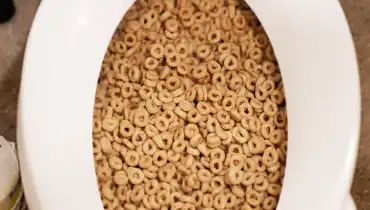Are You Allowed to Dispose of Food in the Toilet?
Are You Allowed to Dispose of Food in the Toilet?
Blog Article
What are your thoughts regarding Think Twice Before Flushing Food Down Your Toilet?

Introduction
Lots of people are often faced with the issue of what to do with food waste, specifically when it comes to leftovers or scraps. One common question that emerges is whether it's okay to flush food down the toilet. In this short article, we'll explore the reasons people may think about purging food, the consequences of doing so, and alternative methods for correct disposal.
Reasons that individuals could take into consideration purging food
Absence of recognition
Some people may not know the prospective harm caused by purging food down the commode. They may mistakenly think that it's a safe method.
Benefit
Flushing food down the toilet might appear like a fast and simple solution to dealing with undesirable scraps, particularly when there's no close-by trash bin readily available.
Negligence
Sometimes, people might just pick to flush food out of sheer laziness, without taking into consideration the repercussions of their actions.
Effects of flushing food down the commode
Environmental influence
Food waste that ends up in rivers can contribute to air pollution and damage marine environments. Furthermore, the water used to flush food can stress water resources.
Pipes issues
Flushing food can bring about blocked pipes and drains pipes, causing expensive pipes repairs and troubles.
Sorts of food that ought to not be purged
Fibrous foods
Foods with coarse structures such as celery or corn husks can get entangled in pipelines and cause obstructions.
Starchy foods
Starchy foods like pasta and rice can soak up water and swell, resulting in blockages in pipes.
Oils and fats
Greasy foods like bacon or food preparation oils should never ever be purged down the toilet as they can strengthen and cause obstructions.
Proper disposal methods for food waste
Making use of a garbage disposal
For homes outfitted with garbage disposals, food scraps can be ground up and flushed via the pipes system. Nonetheless, not all foods are suitable for disposal in this manner.
Recycling
Certain food packaging materials can be recycled, minimizing waste and reducing ecological influence.
Composting
Composting is an eco-friendly method to dispose of food waste. Organic products can be composted and made use of to enrich dirt for gardening.
The importance of proper waste administration
Decreasing ecological injury
Appropriate waste monitoring methods, such as composting and recycling, assistance decrease contamination and maintain natural resources for future generations.
Shielding plumbing systems
By preventing the method of flushing food down the bathroom, homeowners can stop expensive plumbing repairs and preserve the stability of their pipes systems.
Final thought
To conclude, while it might be alluring to purge food down the toilet for comfort, it is necessary to understand the prospective repercussions of this action. By embracing correct waste administration techniques and dealing with food waste properly, individuals can add to much healthier plumbing systems and a cleaner setting for all.
FLUSH FOOD DOWN THE TOILET?
FLUSHING FOOD CAN CAUSE BLOCKED DRAINS IN YOUR HOME
All of the plumbing fixtures in your home are connected to the same sewer pipe outside of your home. This outdoor sewer pipe is responsible for transporting all the wastewater from your home to the Council sewer mains. Even small pieces of food that go down the kitchen sink can cause problems for your sewer. It should therefore be obvious that flushing larger bits of food, such as meat, risks a clog in either the toilet itself or the sewer pipes. Flushing greasy food is even more problematic because oil coagulates when it cools, coating the interior lining of your pipes.
THE TOILET IS NOT A BIN
Food isn’t the only thing that people shouldn’t be flushing down the toilet. People use the toilet to dispose of all kinds of things such as tampons, makeup wipes, dental floss, kitty litter and even underwear. Water goes to great lengths to educate residents about the high costs and stress placed on wastewater treatment systems simply from people flushing the wrong stuff down the toilet. It costs taxpayers millions of dollars each year, and homeowners thousands in blocked drain repairs.
FLUSHING FOOD IS A WASTE OF WATER
Flushing food is a waste of our most precious resource - water. In June this year Level 1 water restrictions were introduced to protect water supply from drought conditions. Much of New South Wales continues to be affected by prolonged drought with recent figures revealing up to 97 per cent of the state remains in drought. Depending on whether you have a single or dual flush toilet, every single flush uses between five and 11 litres of water. In the current climate this is a huge amount of water to be wasting on flushing food that should be placed in the bin (or better yet, the compost).
https://www.jabplumbingsolutions.com.au/blog/can-you-flush-food-down-the-toilet

I discovered that review on Think Twice Before Flushing Food Down Your Toilet when scouting around the search engines. Sharing is good. You won't know, you will be doing someone a favor. Thanks a lot for your time. Return soon.
Book Your Service Report this page